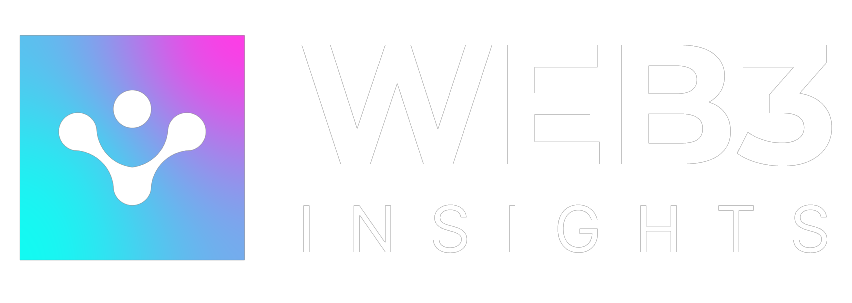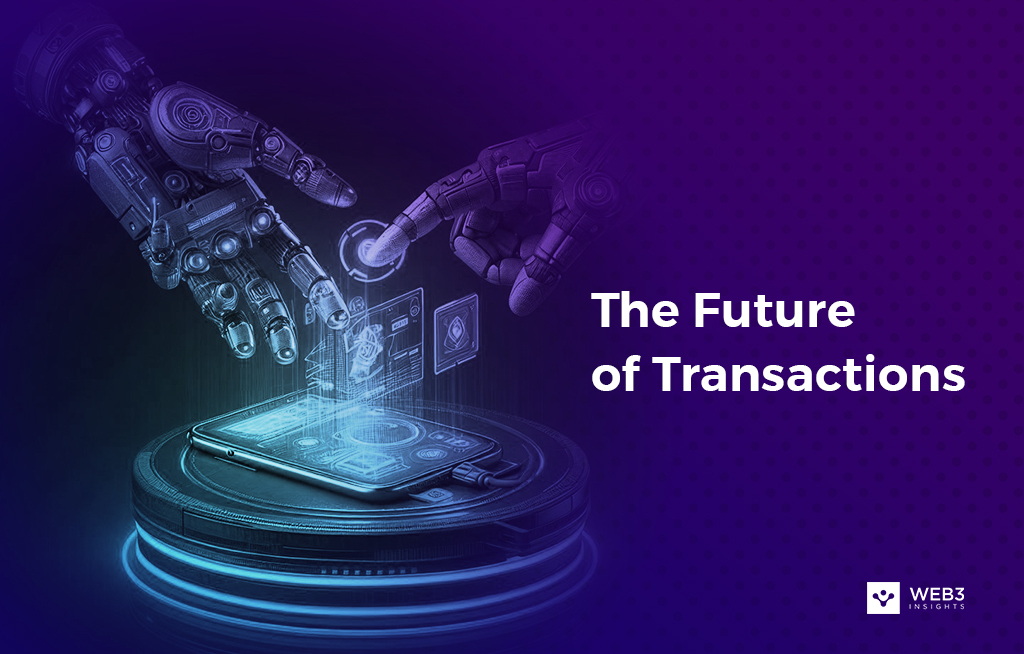In an era where digital innovation continually reshapes our interactions, the evolution of financial transactions stands at the forefront of transformation. Web3, the latest iteration of the internet, is heralding a paradigm shift in how we perceive and execute payments. With decentralized protocols, enhanced security, and unparalleled transparency, Web3 payments are poised to redefine the landscape of financial transactions as we know it. More specifically, Web3 payments hold the key to unlocking the future of transactions.

1. Understanding Web3 Payments
Web3 represents the next phase of internet development, characterized by decentralized applications (dApps) and blockchain technology. Unlike its predecessors, Web1 and Web2, which focused on centralized platforms and user-generated content, Web3 operates on a decentralized network. This decentralized nature empowers users by granting them control over their data and transactions, fostering trust through transparency and immutability. This revolutionary technology opens the door to a wide array of possibilities, including Web3 payments. Additionally, Web3 has the potential to disrupt traditional financial systems by providing a more secure, efficient, and cost-effective alternative.

- Decentralization: Redefining Ownership and Control
Web3 payments rely on blockchain technology, a decentralized ledger that records transactions across a network of computers. Utilizing smart contracts, immutable agreements executed automatically upon meeting predefined conditions, Web3 eliminates the need for intermediaries, streamlining the payment process. This disintermediation reduces costs, eliminates delays, and ensures greater security and transparency. Moreover, by decentralizing ownership and control of data, Web3 payments put the power back into the hands of users, promoting financial autonomy.
- Security and Transparency: Safeguarding Transactions
Security is a paramount concern in the realm of financial transactions. Web3 payments leverage cryptographic techniques to secure transactions, making them tamper-proof and resistant to fraud. The transparent nature of blockchain technology enables participants to track the entire transaction history, ensuring trust and authenticity without relying on a central authority. This unprecedented level of security and transparency is what sets Web3 payments apart from traditional methods.
- Cryptocurrencies and Tokenization: Pioneering Digital Assets
Cryptocurrencies, such as Bitcoin and Ethereum, are at the core of Web3 payments. These digital currencies operate on decentralized networks, enabling peer-to-peer transactions without the need for intermediaries. Moreover, tokenization, the process of representing real-world assets as digital tokens on a blockchain, extends the utility of Web3 payments beyond traditional currencies, encompassing a wide array of assets like real estate, art, and intellectual property. This tokenization also eliminates barriers to entry, opening up new opportunities for financial inclusion.
2. Key Components of Web3 Payments
To fully grasp the potential of Web3 payments, it’s important to understand its key components.

- Decentralized Applications (dApps)
Decentralized applications are at the heart of Web3 payments. These applications operate on a decentralized network and utilize smart contracts to execute transactions without intermediaries. By integrating dApps into traditional payment systems, companies can reap the benefits of Web3, such as enhanced security and reduced costs.
- Smart Contracts
Smart contracts play a vital role in Web3 payments. These self-executing agreements eliminate the need for intermediaries, providing a more efficient and transparent way to conduct transactions. With smart contracts, payments can be triggered automatically upon meeting predefined conditions, streamlining the entire process. Furthermore, smart contracts are immutable, meaning they cannot be altered or tampered with, ensuring trust and authenticity.
- Digital Wallets
Digital wallets, also known as cryptocurrency wallets, allow users to store their digital assets securely and conduct transactions on the blockchain. These wallets use encryption techniques to secure private keys and enable seamless peer-to-peer transactions without relying on a central authority. With digital wallets, users have full control over their funds and can access them from anywhere in the world.
3. The Impact of Web3 Payments
The advent of Web3 payments brings forth a myriad of implications across various sectors and industries, reshaping the way businesses and individuals conduct transactions.
- Financial Inclusion: Bridging the Gap
Web3 payments have the potential to foster financial inclusion by providing access to banking services for the unbanked and underbanked populations worldwide. With minimal entry barriers, individuals can participate in the global economy, transcending geographical constraints and socioeconomic limitations.

- Disrupting Traditional Banking Systems
The decentralized nature of Web3 payments challenges the traditional banking system. As blockchain technology facilitates faster, cheaper, and more secure transactions, financial institutions are prompted to adapt their operations to remain competitive in a rapidly evolving landscape.

- Empowering Micropayments and Micronetworks
Web3 unlocks the potential for micropayments, allowing for the monetization of content and services on a granular scale. Content creators, such as artists, writers, and developers, can receive direct compensation for their work without relying on intermediaries, fostering the growth of micro-networks and empowering individuals in the digital economy.
- Ethical Considerations
As Web3 payments disrupt traditional financial systems, questions arise regarding ethical implications. The decentralized nature of blockchain technology challenges the role of central authorities and raises concerns about data privacy and security. As with any emerging technology, it is crucial to consider the potential ethical ramifications and implement safeguards to mitigate them.

4. Advantages and Challenges
Web3 payments offer numerous advantages over traditional methods, but like any emerging technology, they also present some challenges.
- Advantages
- Enhanced Security: Blockchain technology ensures the security and immutability of transactions, reducing the risk of fraud.
- Decentralization: Web3 payments eliminate intermediaries, promoting financial autonomy for users.
- Cost-Efficiency: By eliminating intermediaries, Web3 payments reduce transaction costs.
- Transparency: The transparent nature of blockchain technology instills trust and authenticity in transactions.
- Global Accessibility: Web3 payments are accessible to anyone with an internet connection, transcending geographical barriers.
- Innovation and Disruption: As Web3 payments continue to evolve, they have the potential to disrupt traditional payment systems and drive innovation.
- Challenges
- User Adoption: Despite its potential, Web3 payments are still relatively unknown to the general public, hindering widespread adoption.
- Regulatory Uncertainty: As with any emerging technology, there is a lack of clear regulations and guidelines for Web3 payments, making it challenging for businesses to fully embrace it.
- Scalability: The current blockchain infrastructure has limitations in terms of speed and capacity, hindering its potential for mass adoption.
- Volatility: Cryptocurrencies, a key component of Web3 payments, are notoriously volatile, making them a risky investment for some.
- Privacy Concerns: The transparent nature of blockchain technology raises concerns about the privacy and confidentiality of transactions.
These challenges are not insurmountable and can be addressed by continued innovation and collaboration within the industry. As Web3 payments continue to evolve, they have the potential to revolutionize the global economy, providing new opportunities for financial inclusion, disruption, and empowerment.
5. Potential Future Developments

The potential of Web3 payments is immense, and as the technology continues to evolve, we can expect further advancements in the future. Some possible developments include:
- Integration with the Internet of Things (IoT): As more devices become connected to the Internet, there is potential for Web3 payments to be integrated into IoT systems, allowing for seamless machine-to-machine transactions.
- Central bank digital currencies (CBDCs): Some governments are exploring the use of CBDCs, which are digital versions of their fiat currency. This could further legitimize and mainstream the use of blockchain technology for payments.
- Enhanced Scalability: Efforts are underway to improve the scalability of blockchain networks to enable faster and more efficient transactions, making them more feasible for everyday use.
- Interoperability: Currently, there are many different blockchain platforms and cryptocurrencies, making it challenging to conduct transactions across networks. The development of interoperable solutions could facilitate seamless cross-platform transactions.
- Integration with DeFi: Decentralized finance (DeFi) is a rapidly growing sector within the Web3 ecosystem, offering innovative financial services powered by blockchain technology. Integration with DeFi could open up a range of new possibilities for Web3 payments.
As the technology continues to evolve, we can expect even more exciting advancements and developments in the world of Web3 payments. Ultimately, as trust and authenticity become the foundation of our financial systems, Web3 payments will play a crucial role in shaping the future of global transactions.
6. Beyond Transactions: Social Impact of Web3 Payments
Web3 payments go beyond just facilitating transactions; they can also have a profound social impact. By promoting financial inclusivity, these payment methodologies can contribute to the reduction of global poverty. They can also foster economic growth in developing regions by providing them with access to a global marketplace. Additionally, the transparency and accountability inherent in blockchain technology can significantly contribute to combating corruption, particularly in countries where governance structures may be weak. Furthermore, the integration of Web3 payments with other emerging technologies like IoT could lead to the development of smart cities, enhancing the quality of life for citizens through improved public services. Thus, the influence of Web3 payments extends far beyond finance, potentially shaping social structures, economic systems, and governance mechanisms for the betterment of societies worldwide. So, the potential and impact of Web3 payments cannot be understated, and their continued evolution and adoption are crucial for a more equitable and prosperous future.
7. Conclusion
Web3 payments, powered by blockchain technology and cryptocurrencies, offer a promising alternative to traditional payment systems. They provide enhanced security, decentralization, cost-efficiency, transparency, and global accessibility. However, their adoption still faces challenges such as user adoption, regulatory uncertainty, scalability issues, volatility concerns, and privacy considerations. Despite these challenges, the potential for Web3 payments is immense, with future developments and advancements on the horizon. Moreover, Web3 payments have the potential to extend beyond just transactions and can contribute to social impact by promoting financial inclusion, combating corruption, and fostering economic growth. As we continue to move towards a more digitized world, Web3 payments will play a crucial role in shaping the future of finance and global transactions. So, it is essential to continue exploring and embracing the potential of Web3 payments to drive forward innovation, disruption, and global connectivity. With continued collaboration and advancements within the industry, we can look forward to a more inclusive, transparent, and efficient financial ecosystem powered by Web3 payments.
Thanks for reading! Dive deeper into the world of Web3 payments by visiting our website at web3insights.io. For more updates, follow us on Twitter, Instagram, and LinkedIn. See you there!
8. Frequently Asked Questions
Q1: What is the primary difference between traditional online payments and Web3 payments?
Traditional online payments are processed through centralized systems and require intermediaries, while Web3 payments are decentralized and peer-to-peer, reducing the need for intermediaries and providing enhanced transparency and security.
Q2: Isn’t the use of Cryptocurrencies in Web3 payments illegal?
The legality of cryptocurrencies varies across different countries. While some places have fully embraced it, others have imposed certain restrictions or outright bans. It’s crucial to understand the regulations of your country before engaging in transactions involving cryptocurrencies.
Q3: Can Web3 payments be reversed or refunded?
No, Web3 payments are immutable once they’ve been verified and added to the blockchain. This feature enhances security but also means that users must be cautious and double-check transactions, as they cannot be reversed or refunded.
Q4: What is the role of smart contracts in Web3 payments?
Smart contracts are self-executing contracts with the terms of the agreement directly written into code. They play a crucial role in Web3 payments by automating transactions and enforcing the terms of the agreement, ensuring trust and reducing the potential for disputes or fraud. Overall, smart contracts facilitate efficient and secure transactions in the Web3 ecosystem.
Q5: How can I get started with Web3 payments?
To start using Web3 payments, you’ll need a digital wallet that supports cryptocurrencies and access to a blockchain network. You can then acquire cryptocurrencies through exchanges or mining and use them for transactions within the Web3 ecosystem. It’s essential to do thorough research and understand the technology before engaging in any payments involving cryptocurrencies. You can also explore different dApps (decentralized applications) that utilize Web3 payments for various services and products.
Disclaimer: The information in this document is for informational purposes only and should not be construed as financial or legal advice. Web3 payments involve risks, and it’s essential to do your own research and consult with professionals before engaging in any transactions. web3insights.io is not responsible for any loss or damages incurred from the use of this information.








